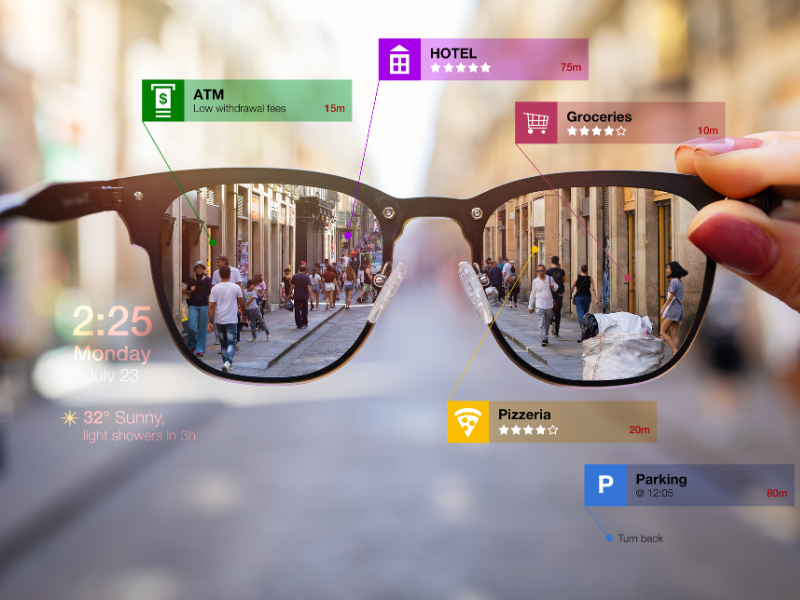As technology continues to push the boundaries of our imagination, augmented reality (AR) has emerged as a powerful tool for transforming the way we interact with the world. In recent years, AR has gained widespread popularity across various industries, from gaming and entertainment to education and healthcare. At the forefront of this AR revolution is ARKit, a robust and innovative platform developed by Apple for creating stunning AR experiences on iOS devices.

ARKit Development: Unlocking the Potential of AR on iOS
Augmented reality melds virtual content with the real world, enhancing our perception and providing unique and immersive experiences. ARKit, Apple’s AR development framework, empowers developers to harness this transformative technology and create cutting-edge applications. Let’s dive into the details of ARKit development and explore the possibilities it offers.

The Basics of ARKit Development
ARKit brings advanced computer vision and motion tracking capabilities to iOS devices, enabling developers to seamlessly integrate virtual elements into the real world. Key features of ARKit include:
- World Tracking: ARKit utilizes the device’s camera to track the environment, allowing virtual objects to appear as if they are anchored to real-world surfaces.
- Scene Understanding: By analyzing the scene, ARKit can detect horizontal planes, vertical surfaces, and object occlusion, providing a more realistic and immersive AR experience.
- Light Estimation: With ARKit’s light estimation, virtual objects can be dynamically lit to match the real-world lighting conditions, fostering a seamless integration of virtual content with reality.
- Motion Tracking: ARKit employs the device’s motion sensors to accurately track movement, ensuring that virtual objects respond realistically to user interactions.
Getting Started with ARKit Development
To embark on your ARKit development journey, you’ll need Xcode, Apple’s integrated development environment for macOS. Utilize Xcode’s powerful tools and ARKit’s extensive documentation to create your first AR app. Familiarize yourself with the ARKit terminology and concepts, such as anchors, nodes, and sessions, to build a strong foundation.
Creating Immersive AR Experiences with ARKit
ARKit’s capabilities pave the way for endless possibilities when it comes to creating immersive AR experiences. From games that blend digital characters with the real world to interactive shopping experiences that allow users to visualize products in their homes, ARKit offers a multitude of opportunities for developers to captivate and engage users.
Advanced Techniques for ARKit Development
As you delve deeper into ARKit development, you can leverage advanced techniques to elevate your AR experiences. Utilize ARKit’s simultaneous localization and mapping (SLAM) capabilities to create persistent AR content that remains anchored in the physical world. Combine ARKit with other iOS frameworks, such as Core ML and Metal, to incorporate machine learning and realistic rendering into your AR apps.
Challenges and Solutions in ARKit Development
While ARKit development offers immense possibilities, it also comes with its fair share of challenges. Optimizing performance, ensuring accurate tracking, and maintaining consistency across different iOS devices are some of the key hurdles developers may encounter. However, by following best practices, leveraging the available resources, and staying updated with the latest ARKit advancements, developers can overcome these challenges and deliver exceptional AR experiences.
FAQs about ARKit Development

How can I test my ARKit app without a physical iOS device?
To test your ARKit app without a physical iOS device, you can utilize Apple’s iOS Simulator integrated within Xcode. The iOS Simulator provides a virtual iOS environment where you can simulate AR experiences and test your app’s functionality before deploying it to a physical device.
Can I develop ARKit apps for Android devices?
ARKit is an exclusive development framework for iOS devices, as it is developed by Apple. However, Android developers can leverage similar capabilities through Google’s ARCore, an AR platform for Android devices. While the development process may differ, the principles of creating compelling AR experiences remain consistent across platforms.
How can I optimize my ARKit app for better performance?
Optimizing the performance of your ARKit app is crucial to ensure smooth and immersive user experiences. Some optimization strategies include minimizing the number of rendered polygons, employing efficient rendering and shading techniques, and utilizing caching mechanisms to reduce the load on memory. Regular profiling and testing can help identify performance bottlenecks and improve your app’s overall efficiency.
Are there any legal considerations for ARKit app development?
As with any app development, it is essential to address legal considerations when creating AR experiences using ARKit. Ensure compliance with copyright laws when incorporating intellectual property into your app, respect user privacy, and obtain necessary permissions when collecting or sharing user data. Familiarize yourself with Apple’s App Store Review Guidelines to ensure your app meets all the necessary requirements and regulations.
Conclusion

ARKit development has opened up a whole new world of possibilities, revolutionizing the way we interact with the digital realm. By leveraging ARKit’s advanced features and techniques, developers can create immersive and unforgettable AR experiences that captivate users across various industries.
Whether you’re a seasoned developer or just starting your AR journey, ARKit development offers endless opportunities to unleash your creativity and shape the future of augmented reality. So, dive in, explore, and unlock the extraordinary potential of ARKit development today.
